Avocado (Persea americana) is a popular fruit that has gained popularity recently due to its health benefits and uses in cuisines worldwide. It is native to Central America but has been cultivated for thousands of years in Mexico, South America, and other parts of the world. Avocados are used in various dishes, including salads, smoothies, and a spread or dip. They are also packed with various vitamins and minerals that benefit your overall health. Here’s everything you need to know about Avocados and how they can benefit your health.
What is Avocado?
Avocado is a fruit that has become increasingly popular in recent years. It is native to Central and South America and grown commercially in many other countries worldwide. The avocado’s skin, flesh, and seed are all edible, with a creamy consistency similar to butter.
Avocados provide an array of vitamins, minerals, and other important nutrients, making them a great addition to any diet. They are a good source of healthy fats, fiber, and essential vitamins and minerals, including vitamin C, vitamin K, folate, and potassium. Avocados can be eaten raw or cooked in various dishes such as salads, toast, or guacamole. They are versatile and delicious ingredients that can add depth of flavor to any meal.
History and Origin of Avocado:
The avocado is believed to have originated in Mexico, Central America, and South America. It is thought that the fruit was initially cultivated by people living in these regions over 7,000 years ago. The oldest evidence of avocado cultivation dates back to 5,000 BC when ancient ruins revealed carved stones depicting avocado-like shapes. Avocados were a staple of the ancient Aztec and Mayan diet and were used for ritual offerings.
The Spanish conquistadors brought avocados back to Europe in the 16th century, where they quickly became popular among European royalty. Avocados began to be cultivated in North America in the 19th century, but it wasn’t until the 20th century that avocados became popular in the US. Today, the scientific name for avocado is Persea Americana, which has become a staple food in many cultures worldwide.
Varieties of Avocados:
There are several different varieties of avocados available in the market today. The most popular varieties include Hass, Fuerte, and Bacon. Hass avocados are the most common variety in grocery stores, with dark green or black skin and creamy flesh. Fuerte avocados are larger than Hass, have light green skin, and are more buttery in texture. Bacon avocados have smooth yellow-green skin and contain fewer calories than other varieties.
Nutritional Value of Avocado:
Avocado is highly nutritious and contains a wide variety of vitamins, minerals, and beneficial plant compounds.
Some key nutrients in avocados include fiber, vitamin K, folate, vitamin C, potassium, vitamin B6, and monounsaturated fatty acids. Avocados are also very high in heart-healthy monounsaturated fatty acids.
Avocados are also an excellent source of fiber, providing over seven grams per half-fruit. Fiber is important for gut health and digestion, as well as helping you feel full for longer periods.
The vitamin K content in avocado is impressive, too — one-half of a medium-sized fruit contains 15% of the recommended daily intake (RDI). Vitamin K helps with blood clotting and bone metabolism.
Folate is essential for pregnant women, babies, and growing children since it’s necessary to form new cells throughout our bodies, including red blood cells. Avocado provides 20% of the RDI for folate in each half-fruit serving.
Vitamin C is also found in avocados, with 10% of the RDI. Vitamin C helps keep our skin healthy and aids the absorption of iron.
The potassium content of avocado is noteworthy — one half-fruit provides 14% of the RDI. Potassium helps regulate blood pressure, heart rate, and hydration levels.
Avocados also contain high amounts of vitamin B6. Each half-fruit serving supplies 10% of the RDI for this important nutrient which helps convert food into energy and create new red blood cells.
Finally, avocados are an excellent source of monounsaturated fatty acids (MUFAs). These are healthy fats that help reduce bad cholesterol levels and lower the risk of heart disease. The high content of MUFAs in avocado may explain why it benefits heart health.
In summary, avocados are a highly nutritious fruit with an impressive array of vitamins, minerals, and fatty acids that can benefit your health. The next time you shop for avocados, keep in mind all the nutritional value they offer. Enjoy!
The Health Benefits of Avocado:
Avocado is a unique fruit that offers a wide range of health benefits. This versatile superfood is packed with essential vitamins, minerals, and healthy fats that can help boost your overall health. Here are some of the top-notch health benefits of avocado:
- Avocado contains Vitamin E, which helps protect cells from oxidative damage and helps maintain healthy skin.
- It also contains potassium which helps regulate blood pressure levels and improves heart health.
- Avocado is rich in fiber, which helps promote regular digestion and helps reduce cholesterol levels in the body.
- The healthy fats found in avocado can help lower bad (LDL) cholesterol while raising good (HDL) cholesterol levels
- Eating avocado can also help reduce inflammation and regulate blood sugar levels.
- Research suggests that consuming avocados may help protect against certain forms of cancer, such as breast and prostate cancer.
- The healthy fats in avocados can help you feel full and satisfied for longer, potentially aiding in weight loss.
- Avocado is a nutrient-dense food that provides essential vitamins and minerals without consuming excess calories or fat.
- It is also a great source of folate which is important for pregnant women to help prevent congenital disabilities in babies.
- Lastly, the healthy fats in avocados may help improve brain health and reduce the risk of age-related cognitive decline.
Adding avocado to your diet is a great way to get an array of important vitamins and minerals while reaping its many health benefits. Whether you enjoy it in salads, spreads, or just by itself, there’s no denying the power of this superfood fruit!
What are the Uses of Avocado?
Avocado is a highly nutritious fruit that has many uses. It can be a delicious and healthy addition to salads, sandwiches, smoothies, and other dishes. Avocados are also an excellent source of essential vitamins and minerals such as vitamin K, folate, magnesium, and potassium. They contain high levels of healthy monounsaturated fatty acids, which help lower LDL (“bad”) cholesterol levels while raising protective HDL (“good”) cholesterol levels. Additionally, they are loaded with antioxidants, including carotenoids like beta-carotene, lutein, and zeaxanthin, that may help protect against cancer and heart disease.
A lesser-known use for avocados is using their oil in beauty products. Avocado oil is rich in oleic acid, a monounsaturated fatty acid that helps to hydrate and soften skin. Additionally, it can help to reduce inflammation, soothe sunburns, and protect against signs of aging. Many skincare products contain avocado oil as an ingredient because of its nourishing benefits.
Avocados are also great for hair care. They contain vitamins B and E, both known to promote healthy hair growth by improving circulation and providing essential nutrients to the scalp and follicles. The high levels of monounsaturated fats in avocados also help keep your hair strong, shiny, and moisturized. Using avocado-based shampoos or deep conditioning treatments can boost your hair’s hydration and much-needed vitamins.
Other potential uses of avocados include:
- Making guacamole.
- Baking cakes or muffins with mashed avocado instead of butter.
- Add cubes to omelets and stir fry dishes.
- Spread mashed avocado on toast as an alternative to butter.
Avocados can also make puddings, ice cream, and smoothies. The possibilities are endless!
Overall, the uses for avocados are numerous and range from culinary applications to beauty regimens. Whether you’re looking for a healthy snack or an ingredient for a skin care product, avocados have something to offer. So next time you need a nutritious snack or skincare remedy, don’t forget about this amazing superfood!
How to Plant Avocado?
Avocado is a popular fruit that is sourced from tropical and subtropical regions. It is an excellent source of vitamins, minerals, proteins, carbohydrates, and healthy fats. Not only does it taste great, but growing your avocado tree provides you with a tasty crop for years to come!
Step 1: Choose Your Avocado Variety
There are hundreds of varieties of avocados, but the two most common are Hass and Fuerte. Hass is the more popular variety and yields larger fruit with a creamy texture and nutty flavor. Fuerte avocados are typically smaller, with a milder flavor and firmer consistency. If you’re unsure which variety to choose, consult your local nursery or agricultural extension office for advice.
Step 2: Planting Your Avocado Tree
The first step in planting an avocado tree is to dig a hole twice as wide as the root ball of your tree. Make sure the bottom of the hole slopes away from the center so water can drain out easily. Place your tree into the hole, ensuring it’s planted at the same depth as it was in its original container. Backfill the hole with soil and lightly tamp down to remove air pockets.
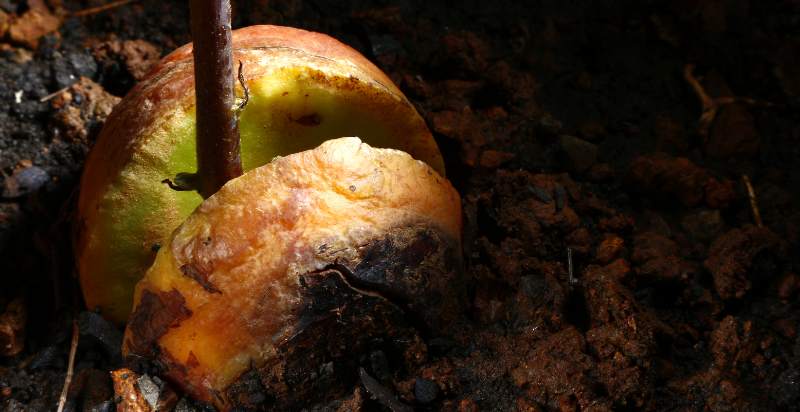
Step 3: Watering Your Avocado Tree
Avocado trees need plenty of water to grow, but too much can cause root rot. Aim for 1-2 inches of water per week during spring and summer when temperatures are warmest. In cooler climates or winter months, you may only need to water your tree once every two weeks. Monitor the soil’s moisture level around your tree using a digital soil meter – if it reads dry, give it a drink!
Step 4: Pruning Your Avocado Tree
Pruning is an important part of keeping your avocado tree healthy and productive. Prune off any dead or diseased branches, as well as suckers that grow from the base of the trunk. If you’re not comfortable pruning yourself, hire a professional arborist to do it for you.
Step 5: Fertilizing Your Avocado Tree
Avocado trees need regular fertilization to stay healthy. Apply a balanced fertilizer once every three months during spring and summer when the tree is actively growing. Avoid using too much fertilizer, which can burn the roots and damage the tree.
Growing an avocado tree can be a rewarding experience! With proper care and maintenance, you can enjoy fresh avocados from your backyard for years to come. Follow these steps, and you’ll be a master avocado grower in no time!

How to Care for and Grow Avocados?
Avocados have many health benefits, and it’s easy to grow if you understand the right conditions and techniques. This guide will cover everything you need to know about growing avocado trees in your backyard or garden.
- Choosing an Avocado Variety: There are several available avocados, each with unique characteristics. Some popular varieties include hass, bacon, fuerte, zutano, and reed. Consider the size, seasonality, and cold tolerance when selecting the best avocado variety for your needs.
- Location: Avocados thrive in sunny areas where temperatures stay between 65-85°F (18-29°C). They also need well-draining soil, so pick a spot with plenty of drainage.
- Planting: Avocado trees can be planted from seed or a grafted tree. If planted from seed, the chances of producing fruit are lower, and it will take longer for the tree to mature (up to 8 years). Grafted trees come with an existing rootstock guaranteed to produce fruit within 2-3 years.
- Water & Fertilizer: Avocados need consistent water to thrive, but they should be balanced as this can lead to root rot or other issues. Adding mulch around the tree’s base helps retain moisture and protect roots from temperature extremes. Fertilize avocado trees with a balanced fertilizer twice a year (beginning of spring and before the summer fruit set).
- Pruning: Prune and shape your tree when it is young, removing dead branches and thinning out crowded growth. This will help maintain a healthy structure and improve air circulation and light penetration to the center of the canopy.
- Pest & Disease Control: Avocados are relatively resistant to pest infestation, but several diseases can affect avocado trees, including root rot, anthracnose, mites, and aphids. Contact a local arborist or extension service for assistance if your tree has been affected by pests or disease.
Following these tips, you can ensure your avocado tree is healthy and productive for many years!
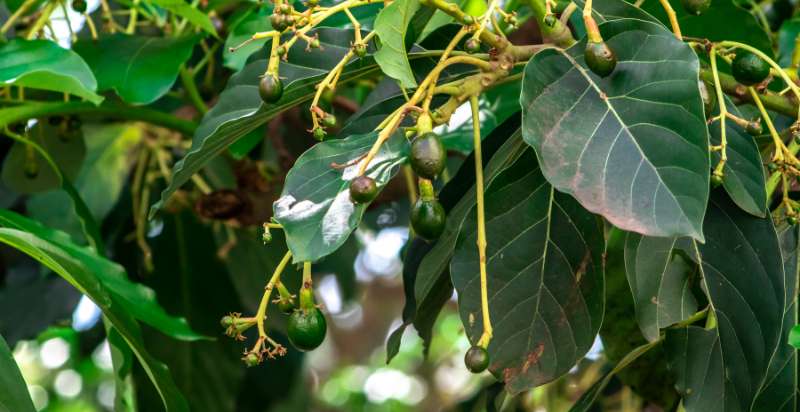
Preventions from Pests and Diseases of Avocado?
Pests and diseases can be controlled through proper management and preventive measures. Here are some of the best prevention tips for keeping your avocado trees healthy:
- Plant-resistant varieties – Avocado varieties differ in their susceptibility to certain pests and diseases, so it’s important to choose a variety that is known to be resistant to the specific pest or disease you’re trying to prevent.
- Monitor your plants regularly – Inspect your avocado tree regularly for signs of pests or disease symptoms, and take action if any are found. This can help catch problems early before they become more severe and harder to manage.
- Use proper irrigation techniques – Water deeply but infrequently is a good rule of thumb for avocado trees. Overwatering can lead to fungal diseases, and underwatering can lead to nutrient deficiencies, making your tree more susceptible to pests and disease.
- Prune dead or damaged branches – Make sure to prune out any dead or diseased branches as soon as they are detected, as this will help keep the rest of the tree healthy by preventing the spread of any pests and diseases on the affected branch.
- Use fertilizer properly – Fertilizing your avocado tree is essential for overall health. Still, it’s important to use a balanced fertilizer and apply it correctly so as not to cause excess nutrients in the soil that can attract certain pests or diseases.
- Use pest and disease control measures – If your avocado tree has been infected with a pest or disease, specific treatments may be available to help manage the problem. However, it’s important to note that this should be done as a last resort, as most pests and diseases can be prevented with proper preventive measures.
These are key prevention tips for keeping your avocado trees healthy and free of pests and diseases. Following them will help ensure your avocado trees thrive with minimal problems.
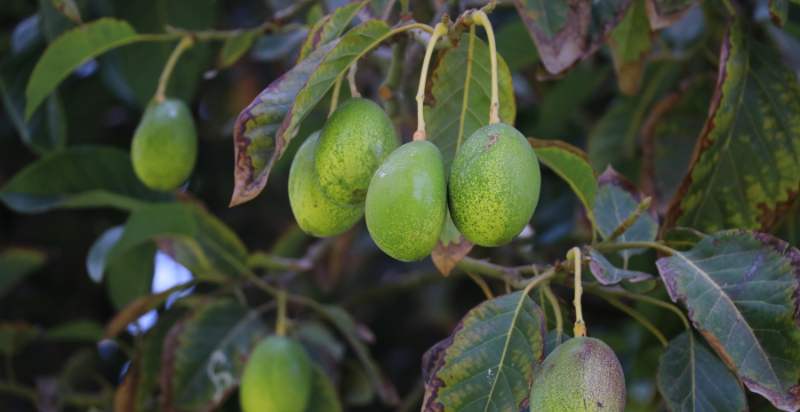
How to Harvest Avocados?
Avocados are one of the most popular fruits in the world and have been a part of people’s diets for centuries. Harvesting avocados is relatively easy, but it requires knowing when and how to do it properly.
When harvesting an avocado, you should look for signs of ripening. The skin should be dark green or black and will begin to feel slightly soft when squeezed gently. If the avocado still feels hard or looks light green, it’s best to leave it on the tree until it’s fully ripe. You can also check if an avocado is ready to be picked by lightly tugging on the stem near its base – if it comes off easily, it is ready to be harvested.
When picking avocados, it’s important to use a tool such as a ladder or long-handled picking pole to reach the highest branches. You don’t want to damage the tree by trying to climb it. Also, try not to drop any fruits, as this can lead to bruising, which could reduce their shelf life.
Once you have picked an avocado, store it at room temperature and out of direct sunlight before cutting it open. To cut an avocado, hold it with both hands, and using a sharp knife, slice through its skin lengthwise until you can pry apart the two halves. Carefully remove the pit from one half and scoop out the flesh with a spoon. Avocado is now ready to be used in many different dishes!
Harvesting avocados can be a rewarding experience and will provide you with delicious fruits for months on end. Make sure you pick them at the right time, use the proper tools to reach the highest branches, and store them correctly before cutting them open. With these tips in mind, you should have no trouble harvesting avocados.
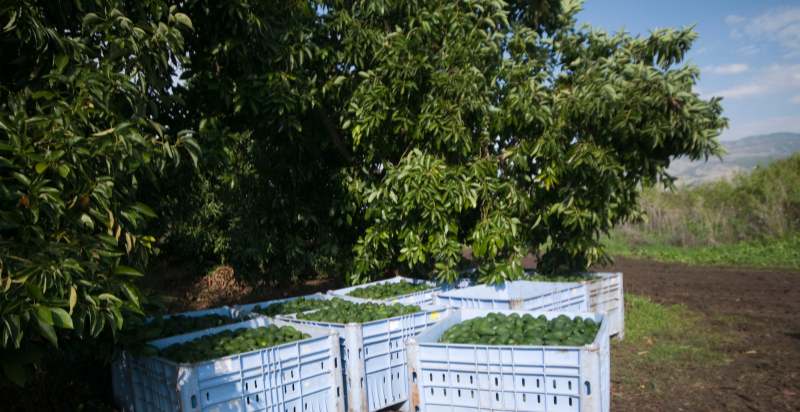
How to Store Homegrown Avocado?
Storing homegrown avocados is simple. Here are some tips on how to properly store them:
- Choose ripe avocados: Select the fruits that are just beginning to soften and have a rich green color. If you pick an avocado that’s too soft, it won’t keep very long, so make sure your choice is right!
- Refrigerate or keep it at room temperature: Depending on what stage of ripeness you want for your avocado, you can either refrigerate it or leave it at room temperature. For ripe avocados, please keep them in the refrigerator until ready to use. To help prolong their shelf life in the fridge, wrap them in a paper towel and place them in a plastic bag. For unripe avocados, leave them at room temperature until they’re ripe.
- Eat quickly: Once your avocado has been cut open or mashed into guacamole, it should be consumed within 24-48 hours to ensure the best flavor and maximum nutrition.
- Freeze for later use: If you have extra avocados that you don’t plan on using immediately, you can freeze them for future use! Slice or mash your avocados before freezing, then store them in an airtight container or freezer bag for up to 4 months. When ready to eat, thaw overnight in the refrigerator before eating cold or heat in the microwave for a few seconds.
These simple tips will help you store your homegrown avocados and keep them fresh for longer!
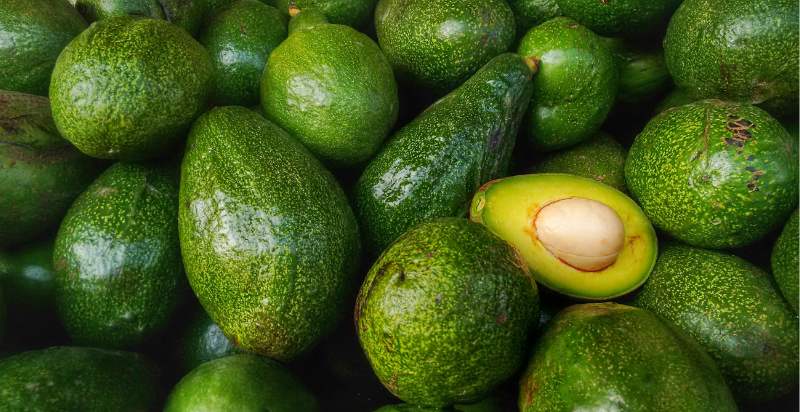
How to use Homegrown Avocado in your day-to-day life?
Using homegrown avocados in your day-to-day life is a great way to reap the rewards of all their health benefits. Avocados are versatile in various dishes, from salads to sandwiches, dips, and even desserts! Here are some tips on how to use homegrown avocados in your cooking and daily meals:
- Salads – Chopped avocado adds amazing flavor, creaminess, and texture to any salad. It’s also a great source of healthy fats and will help keep you satisfied for longer.
- Sandwiches – Mash or slice up some avocado as a spread or topping for your sandwich instead of mayonnaise. You can add it to your lunch wrap to make it extra creamy and delicious.
- Smoothies – Avocado makes a great base for smoothies, adding a creamy texture while still packing in plenty of nutrients. You can also use frozen avocado chunks or puree instead of regular ice cubes to give your smoothie an additional health boost.
- Dips – Whip up some guacamole with homegrown avocados! It’s easy to make and tastes delicious when served with crackers or vegetable sticks.
- Soups – Make a unique soup using ripe avocados and other vegetables you have on hand. It’s sure to be a hit at the dinner table!
- Desserts – Believe it or not, avocado makes a great base for sweet and healthy desserts. Combine your avocados with nuts and cocoa powder to make delicious chocolate mousse, or mix them into cookie batter for an unexpected twist on traditional baked goods.
- Stir-Frys – Avocado can also be used as a thickener in stir-fries and other dishes. Just mash it up and add it at the end of cooking to give your dish extra creaminess without overwhelming its flavor.
- Sushi – Slice up some avocado for the perfect finishing touch to your sushi rolls. It adds crunch, texture, and creamy richness, making it even more delicious!
- Toast – Spread mashed avocado on toast for a quick, healthy snack or breakfast item. You can also top it with chopped tomatoes, herbs, and other toppings for extra flavor.
- Burgers – Avocado is a great topping for burgers as it complements the flavors of beef and veggie patties. Add some slices of avocado to your burger and enjoy its amazing creaminess with every bite!
- Fries – Make baked avocado fries instead of traditional potato ones! Just slice them up, dip them in egg wash, and then in a mixture of breadcrumbs, salt, and pepper. Bake at 375 degrees Fahrenheit for 12-15 minutes until golden brown.
- Ice Cream – Avocado ice cream is a delicious treat you can make at home! Just combine avocados with coconut or almond milk, some sweetener, and your favorite mix-ins to create a creamy, healthy dessert that’s sure to be a hit.
No matter how you use homegrown avocados daily, you’re sure to reap the benefits of their incredible nutrient profile! Enjoy!
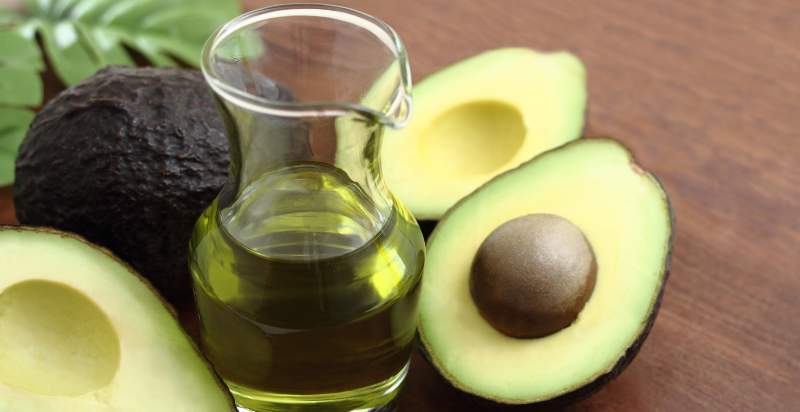
Potential Risks from Avocado in your day-to-day life?
Avocado can be a healthy and nutritious food, but as with any food, there are potential risks from eating too much. Overindulging in avocados can lead to weight gain or worsening health conditions such as high cholesterol or diabetes.
Eating large amounts of fruit may also cause digestive problems for some people due to its high-fat content. Avocados can also contain toxins from pesticides and herbicides, which could cause adverse reactions in some individuals when consumed in large quantities. Therefore, it is important to enjoy avocado in moderation as part of a balanced diet.
Additionally, pregnant women should take caution when consuming avocados due to their potential for increasing the risk of miscarriage, so it is best avoided by expecting mothers unless advised otherwise by a healthcare practitioner. To reduce the risk of any potential adverse health effects, always select fresh avocados and opt for organic when possible. It is also important to rinse off the outer skins before consumption to minimize any pesticide residue. These simple steps can help ensure you enjoy this delicious fruit safely and with minimal risk.
Conclusion:
Avocado is a nutritious and delicious addition to any diet. Its high fiber, healthy fats, and vitamin content can be a great way to boost the nutrient profile of meals while adding texture and flavor. When eaten in moderation and with caution for potential health risks, avocados can provide a wealth of benefits beyond their taste. Enjoy avocado today, and get ready to reap all its amazing health benefits!
- Everything You Wanted to Know About Red Tamarillos - June 2, 2025
- A Guide to Tulips: Everything You Need to Know & More… - June 2, 2025
- Guanabana: Description, Flavor, Benefits, And Uses - May 27, 2025

10 thoughts on “What is Avocado ? How to Plant, Grow, and Harvest Avocado”
Comments are closed.